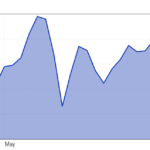Are You Missing Out on Potential 9% Dividend Yield? Find Out How to Increase Your Returns
Many dividend-focused investors are finding modest yields in the current market, with the S&P 500 Index’s average dividend yield below 2%. However, savvy income investors are looking beyond traditional options to find higher-yield investments that offer attractive returns.
Financial advisor Sahil Vakil warns that a high dividend yield is not always a sign of a strong investment, as it could be influenced by factors such as a declining stock price or a company’s ability to sustain dividend payouts. With this in mind, investors are exploring alternative options for higher income.
Two promising higher-yield investment options include Business Development Companies (BDCs) and Midstream Energy Infrastructure investments. BDCs, which provide financing to middle-market businesses, offer yields ranging from 8% to 15%. However, they come with significant risks, such as borrowing leverage and exposure to defaulting businesses during economic downturns.
On the other hand, Midstream Energy Infrastructure investments, in the form of master limited partnerships (MLPs), yield between 4% and 8%. These companies own and operate essential energy infrastructure, providing steady cash flow from long-term contracts. Investors can also consider ETFs to diversify their exposure to the sector.
While these higher-yield investments present attractive income opportunities, they also come with specific risks and tax implications that investors need to carefully consider. By exploring less familiar territory and understanding the nuances of these investments, income investors can potentially achieve higher returns while managing risks effectively.
In conclusion, traditional dividend stocks may not offer sufficient yields for income investors, prompting them to explore alternative options for higher income. By delving into specialized investments like BDCs and Midstream Energy Infrastructure, investors can potentially enhance their income streams while being mindful of the associated risks and tax implications.


:max_bytes(150000):strip_icc()/GettyImages-800441694-defff2bf08cf4f4eb50b3ee34d91fe78.jpg?w=150&resize=150,150&ssl=1)
:max_bytes(150000):strip_icc()/Primary-Image-how-to-buy-dividend-stocks-7503745-3a40ff09887548ac9dd2c6406b200a82.jpg?w=150&resize=150,150&ssl=1)